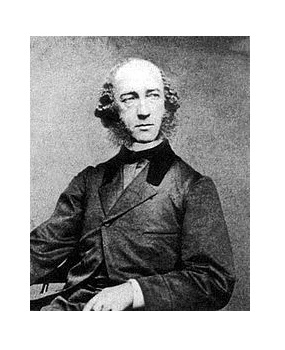Sunlight and Shadow - The Newbury Marshes
Artist: Martin Johnson Heade
Size: 30.5 x 67.3 cm
Medium: Oil on canvas
The painting in discussion takes
the audience towards Newbury and Newburyport, Massachusetts, near the mouth of
the Merrimack River. His acquaintances, John Greenleaf Whittier's poetry and
Bishops Thomas March of Newburyport would have attracted him to the landscape
which he discovered around 1859.
 Sunlight and Shadow is a
particularly masterful example of how the artist balanced the many forces in
his wetland compositions. Three bands make up the painting, a blue sky, pink
and grey clouds and the green meadow. An apple tree on the left on the canvas
frames the composition, the haystack in the center provides a point of focus
and a few animals in the distance in a patch of sunlight create an extra
interest. A stream winds from left to the center in the background. It is
definitely a beautiful painting, yet If one was to follow the marshland, where
would it lead us? The artist depicts "the tides, meteorological phenomena, and other
natural forces that shaped the appearance of the swamp and showed how the land
was used for hunting, fishing, and the harvesting of naturally occurring salt
hay" (quote from National Gallery description).
Sunlight and Shadow is a
particularly masterful example of how the artist balanced the many forces in
his wetland compositions. Three bands make up the painting, a blue sky, pink
and grey clouds and the green meadow. An apple tree on the left on the canvas
frames the composition, the haystack in the center provides a point of focus
and a few animals in the distance in a patch of sunlight create an extra
interest. A stream winds from left to the center in the background. It is
definitely a beautiful painting, yet If one was to follow the marshland, where
would it lead us? The artist depicts "the tides, meteorological phenomena, and other
natural forces that shaped the appearance of the swamp and showed how the land
was used for hunting, fishing, and the harvesting of naturally occurring salt
hay" (quote from National Gallery description).
Sunlight
and shadow, the Newbury Marshes encapsulates both major European aesthetic
traditions: idyllic, light-filled scenes or intense, northern specificity. And
Heade, makes the ordinary seem exotic. The apple tree is full of fruit and the
haystack is half in the sun and shade. The vivid colors give the painting a
hallucinatory quality, where the solitary hay stack in the center taken on
mystical power! The pink clouds are mirrored in the shallow pool of water at
the center of the painting, the sunlight and shadow are seen in the intricate
cloud shadows and the subtle movement from light to dark across the body of the
haystack. It is an exploration of visual elements.
This
painting is joined by other masterworks by Martin Johnson Heade at the National
Gallery. The collection includes a remarkable example of each of the three
distinctive subjects that defined Heade's career, hummingbirds, flowers and
marshes.
The artist, Martine Johnston
Heade was a prolific American painter, (1819-1904) known for his salt marsh
landscapes, seascapes, portraits of tropical birds and still life's. His
painting style and subject matter is regarded by art historians as a
significant departure from that of his peers, even though it is derived from
the romanticism of the time. He first
learnt art from his Father Paul Wouwerman, a historical painter at the time.